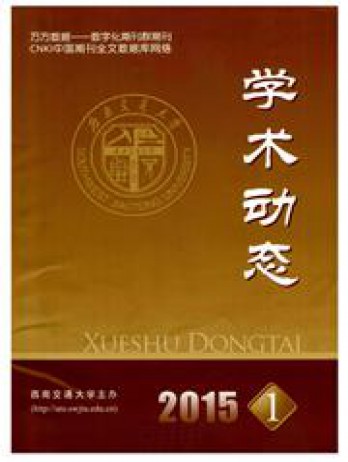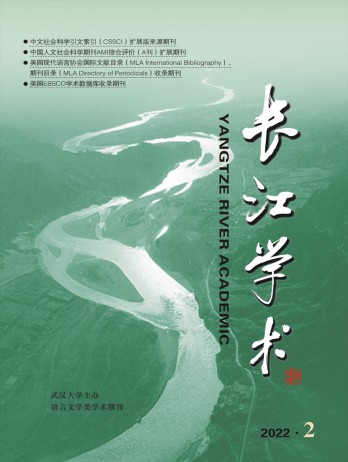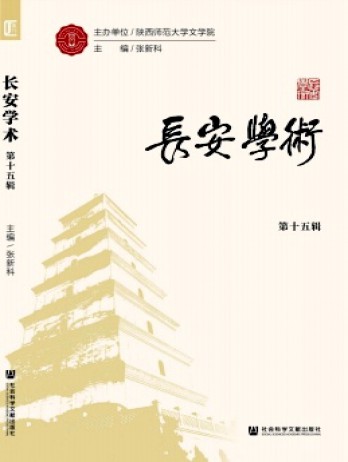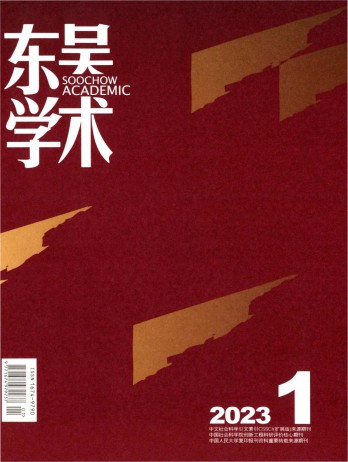首頁 > 精品范文 > 學(xué)術(shù)論文
學(xué)術(shù)論文精品(七篇)
時間:2022-04-28 01:10:47
序論:寫作是一種深度的自我表達(dá)。它要求我們深入探索自己的思想和情感,挖掘那些隱藏在內(nèi)心深處的真相,好投稿為您帶來了七篇學(xué)術(shù)論文范文,愿它們成為您寫作過程中的靈感催化劑,助力您的創(chuàng)作。
篇(1)
1 《城市地下空間開發(fā)利用管理規(guī)定》簡介
現(xiàn)代社會經(jīng)濟(jì)快速發(fā)展、人口膨脹和私家車的出現(xiàn),交通堵塞現(xiàn)象隨處可見。地下空間建設(shè)是發(fā)揮城市功能,完善城市設(shè)備,惠民的有力措施。城市地下空間開發(fā)利用是一個有機(jī)生命體,合理規(guī)劃、有效經(jīng)營地下空間系統(tǒng),使商務(wù)活動形成一個有序有效的生態(tài)鏈,使城市真正贏得可持續(xù)發(fā)展的內(nèi)在能力。
2 功能對等論
奈達(dá)主張譯文要傳達(dá)出與原文一樣的色彩,翻譯是用最恰當(dāng)、自然和對等的語言再現(xiàn)源語的信息。譯本以忠實原文為目的,盡可能的保留源語中隱喻中的意象,不去破壞源語的美感和異國獨特的風(fēng)味。譯文要根據(jù)讀者的需要及時調(diào)整,準(zhǔn)確傳達(dá)原文的精神實質(zhì)。
3 翻譯策略
3.1 專有名詞的翻譯
學(xué)術(shù)論文中有許多專有名詞,由于隔行如隔山,在翻譯專有名詞時專業(yè)詞典功不可沒。根據(jù)功能對等理論的指導(dǎo),專有名詞翻譯既要體現(xiàn)原文語義又要呈現(xiàn)原文語言特色。專有名詞翻譯時一定要根據(jù)專業(yè)情況,如實翻譯,保持客觀。
例文1:生態(tài)間隔 翻譯為ecological space,
資源容量估算 翻譯為Capacity estimation of underground space resource
自然地質(zhì)條件評價體系 翻譯為Evaluation system of natural geological condition
3.2 無主句翻譯
學(xué)術(shù)論文需要嚴(yán)肅、嚴(yán)密,并且具有權(quán)威性;語言需要簡潔明,由于英漢語言表達(dá)習(xí)慣的不同,漢語中有許多無主句,需要轉(zhuǎn)化為被動語態(tài)進(jìn)行翻譯。中文中被動語態(tài)用得不多,則英語中則不然,這種句式能很明了地強調(diào)受事者,并且不需要表達(dá)出施事者。
例文2:受城市的地理環(huán)境、工程地質(zhì)、水文地質(zhì)、土地利用情況、城市環(huán)境等問題的影響,需要對青島市城市地下空間資源進(jìn)行調(diào)查與評估,明確地下空間資源總量、地下空間資源的數(shù)量與質(zhì)量、地下空間資源的可開發(fā)量等,為下一步的地下空間規(guī)劃提供重要依據(jù)。
譯文:With the influences of the geographical environment, engineering geology, hydrogeology, land use and urban environment of Qingdao, it is necessary to investigate and evaluate its urban underground space resource to figure out the quantity, the quality, the exploitation amount of urban underground space resource to provide important basis for the future underground space planning.
3.3 長句翻譯
學(xué)術(shù)論文強調(diào)簡潔明了,長句頗多。翻譯時根據(jù)對等原則,首先弄清原文的句法結(jié)構(gòu), 找出整個句子的中心內(nèi)容及其各層意思, 然后分析幾層意思之間的相互邏輯關(guān)系, 再按照英語的特點和表達(dá)方式, 正確地譯出原文的意思, 不必拘泥于原文的形式。
例文3:地下空間作為城市土地空間資源的重要組成部分,在城市發(fā)展進(jìn)程中已被越來越多地應(yīng)用于有效解決城市的安全防災(zāi)、市政交通、能源環(huán)保、土地緊缺等問題,是規(guī)劃建設(shè)集約緊湊、生態(tài)低碳城市,實現(xiàn)資源節(jié)約、環(huán)境友好、科學(xué)發(fā)展目標(biāo)的一種重要途徑。
譯文:Underground space, as an important part of urban land space resources, in the process of urban development has been increasingly applied to effectively solve the safety of urban disaster prevention, municipal transportation, energy, environmental protection, land scarcity in the process of urban development. It is an important way to realize ecological low carbon city planning construction, resource saving, environment friendly and scientific development.
參考文獻(xiàn)
[1]方夢之,毛忠明.英漢—漢英應(yīng)用翻譯教程[M].上海:上海外語教育出版社,2010.
[2]胥光紅.英語技術(shù)文本的語法特征及翻譯策略[D].濟(jì)南:山東師范大學(xué),2013.
[3]張培基.英漢翻譯教程[M].上海:上海外語教育出版社,2009.
篇(2)
為充分展示我市科技工作者近年來所取得的學(xué)術(shù)成果,加強學(xué)術(shù)交流,活躍學(xué)術(shù)氣氛,促進(jìn)我市學(xué)科發(fā)展和學(xué)術(shù)繁榮,調(diào)動廣大科技工作者為建設(shè)“兩個最適宜”城市獻(xiàn)計獻(xiàn)策的積極性和創(chuàng)造性,推進(jìn)我市科技與經(jīng)濟(jì)的有效結(jié)合,根據(jù)《**市優(yōu)秀學(xué)術(shù)論文評選獎勵辦法》,決定舉辦**市第八屆優(yōu)秀學(xué)術(shù)論文征評活動,現(xiàn)將有關(guān)事項通知如下:
一、征文范圍:
**市市屬、縣(市)區(qū)屬各學(xué)會、協(xié)會、研究會會員;有關(guān)機(jī)關(guān)、廠礦、企事業(yè)單位科技人員。
二、征文內(nèi)容:
理、工、農(nóng)、醫(yī)等自然學(xué)科、交叉學(xué)科領(lǐng)域中具有一定的創(chuàng)新觀點,對經(jīng)濟(jì)和社會發(fā)展有較大影響的學(xué)術(shù)研究成果。
三、征文要求:
1、參加本屆優(yōu)秀學(xué)術(shù)論文征評的論文是本人于2005年1月1日至2006年12月31日期間,在有關(guān)學(xué)術(shù)刊物上公開發(fā)表,或市級以上學(xué)術(shù)會議交流過的論文。
2、參加評選的論文由各學(xué)會在本會評選擇優(yōu)的基礎(chǔ)上,向市評審委員會辦公室推薦上報;縣(市)區(qū)參評論文由當(dāng)?shù)乜茀f(xié)組織初評后,報送市評審委員會辦公室;有關(guān)機(jī)關(guān)、廠礦、企事業(yè)單位科技人員論文由所在單位簽署推薦意見后,直接報送市評審委員會辦公室。
3、所報論文一式四份(A4紙打印件)。電子版論文在主題中須標(biāo)明所屬學(xué)會、姓名、論文題目發(fā)至yckpw@。
4、論文報送截止日期:2007年9月30日
四、評選標(biāo)準(zhǔn):
1、選題新穎、科學(xué),有獨特見解,有前瞻性、針對性、可行性、實用性。論點明確、鮮明,緊扣主題。
2、論證充分嚴(yán)密,論證過程符合邏輯,思路清晰,語言生動簡練。論據(jù)準(zhǔn)確可信,理論材料引用要具權(quán)威性,有針對性;事實材料的引用要真實,且具典型性。
3、論文要認(rèn)真分析、研究工作中的經(jīng)驗、問題、規(guī)律和對策,在理論上有一定深度,在實踐中有一定的社會價值。結(jié)論的得出自然合理,表述明確嚴(yán)謹(jǐn)。
五、評選與獎勵:
1、論文按衛(wèi)生、農(nóng)業(yè)、教育、綜合分為四個學(xué)科,聘請有關(guān)學(xué)科專家、學(xué)者組成評審委員會,負(fù)責(zé)參評論文的評審。
2、評選出的優(yōu)秀學(xué)術(shù)論文由市科技工作領(lǐng)導(dǎo)小組(科技領(lǐng)導(dǎo)小組組長為市政府市長)頒發(fā)獲獎證書,并給予相應(yīng)的物質(zhì)獎勵。
六、組織工作:
為確保本屆優(yōu)秀論文征評活動順利開展,成立**市第八屆優(yōu)秀學(xué)術(shù)論文評審委員會。
**市優(yōu)秀學(xué)術(shù)論文評選獎勵辦法
第一章總則
第一條為了實現(xiàn)**市優(yōu)秀學(xué)術(shù)論文獎評選工作規(guī)范化、制度化,不斷促進(jìn)人才成長、學(xué)科發(fā)展、學(xué)術(shù)繁榮、科技進(jìn)步,實施科教興銀戰(zhàn)略,制定本辦法。
第二條**市優(yōu)秀論文獎的評選堅持學(xué)術(shù)水平和應(yīng)用價值并重及公開、公平、擇優(yōu)的原則,積極引導(dǎo)和鼓勵廣大科技工作者開展科學(xué)研究、科技創(chuàng)新,促進(jìn)科技和經(jīng)濟(jì)的結(jié)合,繁榮我市的科技事業(yè)。
第三條**市優(yōu)秀論文獎為市級獎,每兩年評選一次。
第二章組織
第四條成立**市優(yōu)秀論文獎評審委員會(以下簡稱市評委會)。市評委會由市有關(guān)領(lǐng)導(dǎo)、有關(guān)部門負(fù)責(zé)人和自然學(xué)科、交叉學(xué)科(或?qū)W會、協(xié)會、研究會,以下簡稱學(xué)會)具有高級職稱的專家、學(xué)者組成。
第五條市評委會下設(shè)辦公室,承擔(dān)評審工作的日常事務(wù)。辦公室設(shè)在**市科學(xué)技術(shù)協(xié)會(以下簡稱市科協(xié))。
第三章申報
第六條凡在**市的科技工作者和學(xué)會會員的論文均可申報,與外市人員合作的論文,我市科技工作者必須是第一作者。外市作者受我市有關(guān)單位委托承擔(dān)我市有關(guān)項目的研究成果也可以申報,但要提供委托方的證明。
第七條**市優(yōu)秀學(xué)術(shù)論文獎每兩年申報評審一次。申報參評的論文是評審年限范圍內(nèi)在公開出版刊物上發(fā)表的。
第八條申報參加**市優(yōu)秀學(xué)術(shù)論文獎的論文,要求觀點明確、論據(jù)充分、結(jié)論準(zhǔn)確、語言簡煉、邏輯性強。
第九條凡要求參加論文評審的學(xué)會會員及有關(guān)科技人員,必須由論文第一作者提出申請,并詳細(xì)填寫申請表,學(xué)會會員可向所在學(xué)會申報,沒有參加學(xué)會的科技工作者可以直接向市評委會辦公室(市科協(xié))申報。
第十條數(shù)人合作的論文,申報作者最多不超過5人,署名次序應(yīng)與時一致;以協(xié)作組、課題組申報的論文,必須署主要完成人名字,人數(shù)不超過5個。
第四章標(biāo)準(zhǔn)
第十一條**市優(yōu)秀學(xué)術(shù)論文獎采用等級制獎,設(shè)一等獎、二等獎、三等獎,獎項數(shù)額根據(jù)論文申報情況而定。
第十二條一等獎、二等獎、三等獎標(biāo)準(zhǔn)為:
(一)凡在理論上、學(xué)術(shù)上處國內(nèi)先進(jìn)、區(qū)內(nèi)領(lǐng)先地位,對社會和經(jīng)濟(jì)的發(fā)展能產(chǎn)生重大影響的論文;或?qū)Ρ緦W(xué)科發(fā)展有重大學(xué)術(shù)價值的論文為一等獎。
(二)凡在某一研究領(lǐng)域中有創(chuàng)新的觀點,其學(xué)術(shù)水平屬區(qū)內(nèi)先進(jìn)、市內(nèi)領(lǐng)先地位;或?qū)ι鐣徒?jīng)濟(jì)的發(fā)展有較大影響的論文為二等獎。
(三)凡具有一定的學(xué)術(shù)理論觀點,其水平屬市內(nèi)先進(jìn)、行業(yè)領(lǐng)先地位;或有一定的推廣價值,對社會和經(jīng)濟(jì)的發(fā)展能產(chǎn)生一定影響的論文為三等獎。
第五章評選
第十三條評審工作按專業(yè)評審組(初評)和市評委會(終評)兩級進(jìn)行。所有申報論文均需逐級參加評審。
第十四條專業(yè)評審組(或?qū)W會)對論文進(jìn)行認(rèn)真審閱,并采用無記名投票方式推薦一、二、三等獎。每篇論文按水平高低,得票多少列出順序。
第十五條各評審組(或?qū)W會)在初評的基礎(chǔ)上推薦報送一、二、三等獎各若干篇,其中一等獎不超過申報論文總數(shù)的10%;二等獎不超過總數(shù)的20%;三等獎不超過總數(shù)的30%;
第十六條市評委會根據(jù)專業(yè)評審組(或?qū)W會)推薦,對一、二、三等獎進(jìn)行終評,通過無記名投票方式進(jìn)行表決,得票超過評委的半數(shù)方為有效。
第十七條評選獲獎的論文將通過有關(guān)媒體公示。
第十八條專業(yè)評審組評出的一、二、三等優(yōu)秀論文在向市評委會推薦上報時應(yīng)附下列材料:
(一)收到全部參評論文目錄清單1份(論文清單應(yīng)包括專業(yè)評審組名稱、論文題目、作者姓名、職稱、單位);
(二)評審組人員名單一份,投票結(jié)果材料l份;
(三)論文在學(xué)術(shù)刊物上發(fā)表的封面(要有刊號)及目錄l份;
(四)論文申報表、評審組評定等級、評語及論文各一式4份(論文一律用中文書寫)。
第六章獎勵
第十九條**市優(yōu)秀學(xué)術(shù)論文獎本著精神獎勵和物質(zhì)獎勵相結(jié)合的原則。優(yōu)秀論文獎由市科技領(lǐng)導(dǎo)小組發(fā)文公布,并向獲獎?wù)哳C發(fā)證書和獎金。
第二十條市評委會辦公室向獲獎?wù)咚趩挝粫嫱▓螳@獎結(jié)果,存入個人檔案,作為論文作者考核、晉升、評定專業(yè)技術(shù)職稱及參評各種獎勵的依據(jù)之一。
第七章紀(jì)律
第二十一條凡申報人弄虛作假剽竊他人成果及多頭評獎的獲獎?wù)撸墒性u委會撤銷有關(guān)獎勵,收回證書和獎金,并通知其所在單位給予批評教育或行政處分。
第二十二條獲獎?wù)撐囊蛑R產(chǎn)權(quán)、署名權(quán)等引起的糾紛,由獲獎?wù)叱袚?dān)責(zé)任。
第二十三條市評委會和工作人員必須嚴(yán)格遵守評審紀(jì)律,認(rèn)真執(zhí)行評審標(biāo)準(zhǔn),堅持質(zhì)量第一和公平、公正、擇優(yōu)的原則,團(tuán)結(jié)協(xié)作,秉公盡職,按時完成評審工作。
第二十四條評審人員如有行為,一經(jīng)發(fā)現(xiàn)立即撤銷其評審資格。
第八章附則
第二十五條本辦法由市評委會負(fù)責(zé)解釋。
篇(3)
目錄
第一章 科學(xué)與科學(xué)研究(概論)??????????????(1)
第一節(jié)科學(xué)的概念及其性質(zhì)?????????????(1)
第二節(jié)科學(xué)研究的概念及其能力培養(yǎng)?????????(9)
第二章 科學(xué)研災(zāi)的方法?????????????????(15)
第一節(jié)科學(xué)研究的思維方法?????????????(15)
第二節(jié) 科學(xué)研究的實踐方法 ?????????????(26)
第三節(jié) 調(diào)查研究的方法 ???????????????(38)
第三章信息檢索與利用????????????????(44)
第一節(jié)信息和信息檢索 ??????????????(44)
第二節(jié) 信息檢索工具及其利用????????????(48)
第四章學(xué)術(shù)論文概論?????????????????(64)
第一節(jié)學(xué)術(shù)論文的概念??????????????(64)
第二節(jié)學(xué)術(shù)論文的性質(zhì)??????????????(68)
第三節(jié) 論文的特點 ????????????????(75)
第五章學(xué)術(shù)論文的選題????????????????(81)
第一節(jié)課題類型和選題原則????????????(81)
第二節(jié) 選題的途徑、步驟?????????????(100)
第三節(jié) 選題的方法????????????????(105)
第六章學(xué)術(shù)論文的寫作過程 ?????????????(109)
第一節(jié) 擬定提綱?????????????????(109)
第二節(jié) 寫作初稿?????????????????(112)
第三節(jié) 實施論證?????????????????(114)
第四節(jié) 修改論文?????????????????(118)
第五節(jié) 論文定稿?????????????????(122)
第七章學(xué)術(shù)論文的寫作方法??????????????(124)
第一節(jié)社會科學(xué)論文的寫作方法??????????(124)
第二節(jié) 自然科學(xué)論文的寫作方法??????????(133)
第八章學(xué)術(shù)論文的寫作規(guī)范??????????????(151)
第一節(jié)學(xué)術(shù)論文寫作規(guī)范的概念及常用標(biāo)準(zhǔn)的使用??(151)
第二節(jié) 學(xué)術(shù)論文寫作規(guī)范的相關(guān)要求????????(152)
第九章畢業(yè)論文的答辯與評價?????????????(167)
第一節(jié)學(xué)術(shù)論文(畢業(yè)論文)的答辯?????????(167)
第二節(jié) 學(xué)術(shù)論文(畢業(yè)論文)評價??????????(175) 3/27/2013Page 1 of 5
第十章 部分專業(yè)論文示例???????????????(183)
范文一:少數(shù)民族研究論文?????????????(183)
范文二:教育學(xué)類論文???????????????(191)
范文三:文學(xué)類論文.???????????????(197)
范文四:英語類論文????????????????(204)
范文五:數(shù)學(xué)類論文????????????????(2l0)
范文六:物理學(xué)類論文???????????????(2l6)
范文七:化學(xué)類論文????????????????(224)
范文八:生物學(xué)類論文???????????????(230)
附錄一學(xué)術(shù)論文的編排規(guī)范??????????????(240)
主要參考文獻(xiàn)?????????????????????(250)
后記???????????????????????(250)
第一章科學(xué)與科學(xué)研究(概論)
本章從介紹科學(xué)與科學(xué)研究的概念及其特征開始,對科學(xué)的概念、科學(xué)研究的可能性、科學(xué)與技術(shù)的關(guān)系及建立基礎(chǔ)等等問題做了探討。并強調(diào)了要以更快的速度促進(jìn)科研創(chuàng)新,必須對科研能力的養(yǎng)成教育的重要性進(jìn)行再認(rèn)識。
第一節(jié) 科學(xué)的概念及其性質(zhì)
一、什么是科學(xué)
(一)科學(xué)的概念
“科學(xué)(science)”一詞來源于拉丁文“scienta”,意為“知識”、“學(xué)問”。16世紀(jì)傳人中國,當(dāng)時將英語“science”譯成“格致”,系“格物致知”的簡稱,以表述實踐出真知的含義。在日本明治維新時期.日本教育學(xué)家福澤吉把“science”譯成“科學(xué)”并在日本廣泛應(yīng)用。1893年.康有 為引進(jìn)并使用“科學(xué)”二字,嚴(yán)復(fù)在翻譯《天演論》時,也用了“科學(xué)”二字,此后“科學(xué)”替代了“格致”,并沿用至今。
早在古希臘時期.亞里士多德在使用和討論“科學(xué)”這一范疇時把它與知識聯(lián)系在一起,認(rèn)為科學(xué)是關(guān)于事實的原因的知識。被譽為近代實驗科學(xué)的真正始祖的培根,在提出“知識就是力量”這一口號時,進(jìn)一步把知識與科學(xué)聯(lián)系在了一起。這里我們所要明白的是.科學(xué)是知識,但是卻不能說“知識是科學(xué)”,即有的知識可以被稱之為科學(xué).有的則不能。那么,哪些知識可以被稱之為科學(xué)呢?羅素曾經(jīng)把“科學(xué)”規(guī)定為訴諸人類理性的“確切的知識”,指關(guān)于有限領(lǐng)域、有實證根據(jù)、有明確適用范同的知識。達(dá)爾文說“科學(xué)就是整理事實,以便從中得出普遍性的規(guī)律或結(jié)論”,指出科學(xué)是反映客觀事實和規(guī)律的知識。科學(xué)學(xué)的創(chuàng)始人之一J.D.貝爾納說,“科學(xué)可作為一種建制.一種方法,一種積累的知識傳統(tǒng),一種維持或發(fā)展生產(chǎn)的主要因素,以及構(gòu)成我們的諸信仰和對宇宙和人類的諸態(tài)度的最強大勢力之一”,科學(xué)是反映客觀事實和規(guī)律的知識體系相關(guān)活動的事業(yè)。
《韋伯斯特新世界大辭典》給“科學(xué)”下了這樣一個定義:“科學(xué)是從確定研究對象的性質(zhì)和規(guī)律這一目的出發(fā),通過觀察調(diào)查和實驗而得到的系統(tǒng)的知識。”這一定義首先規(guī)定了科學(xué)的對象;確定研究對象的性質(zhì)與規(guī)律。這個確定研究對象是不依賴于我們認(rèn)識主體而存在的客觀世界,這個世界有著自己的規(guī)定性和發(fā)展規(guī)律。這一點是一切科學(xué)的前提。我國的《辭海扒1979年版)認(rèn)為:“科學(xué)是關(guān)于自然、社會和思維的知識體系”,科學(xué)應(yīng)該按照內(nèi)在遲輯關(guān)系把已知知識條理化、系統(tǒng)化、綜合化,使之成為反映客觀事實和規(guī)律的知識體系.而且這種知識體系仍舊在不斷地補充和完善。
我們可以從以下三方面進(jìn)行考察,以加深對科學(xué)概念的認(rèn)識。
1.科學(xué)是知識體系
這是從理論方面對科學(xué)進(jìn)行考察。
所謂知識體系,是說科學(xué)不是零星知識的簡單堆砌,而是系統(tǒng)化的知識總和。科學(xué)作為一種知識體系,是一種意識形態(tài);作為觀念形態(tài)的科學(xué)從來就是人類精神文明的重要因素,科學(xué)發(fā)展受到哲學(xué)、宗教、藝術(shù)等社會意識形態(tài)的影響,但它又是促進(jìn)整個人類精神文明進(jìn)步的最強大的力量。
科學(xué)是經(jīng)過實踐驗證的發(fā)展著的關(guān)于自然、社會和思維的知識體系。在漫長的原始社會里,科學(xué)的萌芽還沒有從物質(zhì)生產(chǎn)中分離出來,并且與原始乙術(shù)、原始宗教結(jié)合在一起;古代科學(xué)除少數(shù)學(xué)科取得理論形態(tài)外,絕大部分是實用科學(xué),條理化了的經(jīng)驗知識;以科學(xué)實驗為基礎(chǔ)的近代科學(xué)是15世紀(jì)以后歐洲文藝復(fù)興運動中開始形成和發(fā)展起來的,現(xiàn)代科學(xué)從19世紀(jì)末葉算起.其歷史
才100多年。科學(xué)在其發(fā)展過程中不僅形成了特殊的認(rèn)識方法——觀察、實驗、模擬、科學(xué)抽象、假說和理論等一般科學(xué)方法,各門學(xué)科還形成了各自的特有的方法;而科學(xué)方法一旦形成,反過來就成為促進(jìn)科學(xué)發(fā)展的有利因素。科學(xué)不僅是對客觀世界認(rèn)識的結(jié)果.同時又是認(rèn)識過程本身,是特殊的“精神生產(chǎn)”。
20世紀(jì)初,數(shù)學(xué)、物理學(xué)、化學(xué)、天文學(xué)、地理學(xué)、生物學(xué)等六大基礎(chǔ)科學(xué)以及電力、機(jī)械、建筑、鋼鐵、醫(yī)藥、農(nóng)學(xué)等工程科學(xué)都已比較成熟,科學(xué)不再只是事物或規(guī)律組成的知識單元,而是由許多知識單元組成學(xué)科,由學(xué)科組成學(xué)科群,形成了一個由很多門類交織組成的知識體系。愛因斯坦指出,科學(xué)并不就是一些定律的匯集,也不是許多不相關(guān)的事實的目錄,它是人類用其頭腦對自由發(fā)明出來的觀念和概念所作的創(chuàng)造。
2.科學(xué)是社會活動
這是從社會分工方面對科學(xué)進(jìn)行考察。
科學(xué)作為知識體系,其結(jié)構(gòu)只能是各種知識成分之間的邏輯關(guān)系。科學(xué)作為一種活動,其結(jié)構(gòu)則必然是各種要素之間的相互作用。科學(xué)活動的主體是科學(xué)家,科學(xué)認(rèn)識的主體是集體,是一定的社會集團(tuán),而不是個人;科學(xué)只能是社會集團(tuán)的活動,是社會事業(yè),不是個人活動。科學(xué)活動的工具包括思想工具和物質(zhì)工具.由世界觀、信念、理論、方法和儀器等組成,科學(xué)活動的對象是自然界和人類社會,是客觀世界。
科學(xué)家共同體、科學(xué)活動的工具和科學(xué)活動的對象這三者的相互作用,即所謂的科學(xué)的“三體運動”構(gòu)成一定的科學(xué)活動方式,使科學(xué)成為整體性的統(tǒng)一事業(yè)。不同的科學(xué)活動方式,決定著各個歷史發(fā)展階段的科學(xué)形態(tài),正如不同的生產(chǎn)方式?jīng)Q定著各種社會形態(tài)一樣。科學(xué)之所以為科學(xué),并不在于它擁省多少可靠的知識,而在于內(nèi)這種特定的“三體運動”所構(gòu)成的自覺的、能動的、有目的的研究活動e美國科學(xué)哲學(xué)家?guī)焖嫉目茖W(xué)觀是:科學(xué)是科學(xué)家集團(tuán)即共同體的活動。認(rèn)為科學(xué)不是,至少不僅僅是現(xiàn)成知識的堆砌,而是人類探索知識的活動。
3.科學(xué)是實踐力量
這是從作用方面對科學(xué)進(jìn)行考察。
科學(xué)是人類進(jìn)化過程中最重要的事情。人們對科學(xué)本質(zhì)的認(rèn)識,從科學(xué)結(jié)論的實際應(yīng)用與社會作用方面的考察,提示了科學(xué)是一種社會發(fā)展的實踐力量。人類信賴科學(xué)才得以建立起今天的物質(zhì)文明,而到了現(xiàn)代.科學(xué)已成為社會具有決定意義的發(fā)展因素。
科學(xué)作為一種人類實踐力量給社會帶來了巨大進(jìn)步,同時也帶來了許多社會問題。科學(xué)的目的究竟是什么?科學(xué)最終將把我們引領(lǐng)何方?樂土抑或深淵?要把科學(xué)放置于整個價值觀念體系中去思考,因為科學(xué)只有和其他社會因素相互作用,才能呈現(xiàn)出正面的價值。因此我們說,科學(xué)的發(fā)展,更增加了人類自身的責(zé)任,保護(hù)他人,發(fā)展自己,保護(hù)地球,發(fā)展未來。
最早把科學(xué)作為一種力量來認(rèn)識的是英國哲學(xué)家培根,他認(rèn)為知識不是一種純思辨,而是一種力量,是認(rèn)識自然和駕馭自然的力量、人性自我完善的力量、滋養(yǎng)信仰的力量、社會改革的力量。“知識就是力量”成為科學(xué)最概括、最切要的箴言。
總之,科學(xué)的概念應(yīng)當(dāng)是認(rèn)識過程、認(rèn)識結(jié)果和認(rèn)識力量的統(tǒng)一體,即科學(xué)作為知識體系是事實,是人類文化積淀的結(jié)果;科學(xué)作為社會活動是過程.是人類文化的繁衍;科學(xué)作為實踐力量是作用,是人類文化的動力組成。因此,科學(xué)有了一個較為綜合的定義:科學(xué)是關(guān)于現(xiàn)實本質(zhì)聯(lián)系的客觀真知的動態(tài)體系,這些客觀真知是由于特殊的社會活動而獲得與發(fā)展起來的,并且由于其應(yīng)用而轉(zhuǎn)化為社會的直接實踐力量。
(二)科學(xué)與技術(shù)
1.技術(shù)的概念
“技術(shù)(technology)”一同來源于希臘語,是希臘語“techne”(技藝、手藝)、“l(fā)ogos”(文字、語詞)的組合,本意是一種實用的技藝,包括藝術(shù)、技能、本領(lǐng)等。與科學(xué)一樣,技術(shù)是一個動態(tài)概念,隨著社會歷史和人類認(rèn)識的發(fā)展而變化,技術(shù)與人類的歷史一樣久遠(yuǎn),當(dāng)人類創(chuàng)造第一個生產(chǎn)工具時就產(chǎn)生了最初的生產(chǎn)技術(shù)。作為改造世界的手段,技術(shù)就是人類自然肢體的延長。古
希臘,亞里士多德把技術(shù)看做是制作的智慧;17世紀(jì)培根提出技術(shù)是操作性學(xué)問;到了18世紀(jì),法國科學(xué)家狄德羅認(rèn)為技術(shù)是人類借以改變或改造其環(huán)境的方法或活動,“技術(shù)是為某一目的共同協(xié)作組成的各種工具和規(guī)則體系”;20世紀(jì)以來,技術(shù)的含義更加寬廣,除了技巧、技能以外,還包括加工方法、工藝流程和技術(shù)思想等。
根據(jù)不同的功能,技術(shù)可分為技術(shù)中最基本的生產(chǎn)技術(shù)與軍事技術(shù)、科學(xué)實驗技術(shù)、文化教育技術(shù)、衛(wèi)生技術(shù)、日常生活技術(shù)等各類非生產(chǎn)技術(shù);根據(jù)不同的性質(zhì),技術(shù)可分為滿足社會需要的各種物質(zhì)手段的硬技術(shù)與運用各種物質(zhì)手段的軟技術(shù),如決策技術(shù)、預(yù)測技術(shù)、評價技術(shù)以及各種專業(yè)技巧手法,以達(dá)到一定社會目的的知識、技能、技巧的軟技術(shù)。
技術(shù)的發(fā)展經(jīng)歷了漫長的歷史過程,技術(shù)發(fā)展的每一歷史階段都有其中心技術(shù)和相應(yīng)的輔助技術(shù)。能量轉(zhuǎn)化是技術(shù)的主要功能之一,從人力、畜力到蒸汽力、電力、核力的能量轉(zhuǎn)換方式的變革,每一次都引起了重大的技術(shù)革命。原始社會以石器技術(shù)為中心,以后是青銅技術(shù)、鐵器技術(shù),現(xiàn)代則以機(jī)器和自動化技術(shù)為中心。中心技術(shù)往往標(biāo)志著人類歷史發(fā)展的一個時代。過去的技術(shù)主要是在經(jīng)驗知識的基礎(chǔ)上緩慢發(fā)展起來的,現(xiàn)代技術(shù)則幾乎都是科學(xué)發(fā)展的結(jié)果。
綜上所述,技術(shù)是人類為實現(xiàn)社會需要而創(chuàng)造的手段的總和,是把科學(xué)知識和實踐經(jīng)驗應(yīng)用于生產(chǎn)過程,以達(dá)到利用和改造世界目的的手段和方法的知識體系。它的基本要素是能源、材料、信息和工藝,是一種既包括生產(chǎn)工具、設(shè)備等硬件,又包括工藝、方法、制度等軟件的技術(shù)系統(tǒng),是如何將科學(xué)知識轉(zhuǎn)化為認(rèn)識和改造世界的手段。
2.科學(xué)與技術(shù)的關(guān)系
對于科學(xué)而言,技術(shù)是科學(xué)的延伸,對于技術(shù)而言,科學(xué)是技術(shù)的升華。二者足辯證統(tǒng)一的關(guān)系。
科學(xué)與技術(shù)既有差別性,又有統(tǒng)一性。
篇(4)
論文致謝規(guī)范一
(1)致謝內(nèi)容和致謝用詞都必須征得被謝人或被謝單位的同意,因為他們雖然對整個論文不負(fù)直接責(zé)任,但是,對自己參與的工作部分是有社會責(zé)任的;
(2)對致謝的內(nèi)容必須書寫清楚,要實事求是,既不任意取舍也不夸張渲染,更不要為“裝點論文門面”強拉名人“助威”,也不應(yīng)該將致謝部分視為資助單位的宣傳廣告;
(3)致謝用詞要簡短、懇切、真誠、禮貌,通常僅用一句話表達(dá),對被謝人或單位的情況不必作任何介紹;
(4)國標(biāo)規(guī)定的錄著格式為致謝用語應(yīng)放在圓括號內(nèi),置于正文之末,并另起一行。通常習(xí)慣寫法為“(本研究承蒙××單位×××教授指導(dǎo)完成,謹(jǐn)此致謝!)”、“(本文承蒙××同志審修,謹(jǐn)致謝意!)”、“(本試驗中所用試劑均蒙××單位惠贈,謹(jǐn)致謝忱!)”。
論文致謝規(guī)范二
在文后致謝是表示感謝并記錄在案的意思。對給予實質(zhì)性幫助而又不能列為作者的單位或個人應(yīng)在文后給予致謝。但必須征得被謝人的書面同意。
篇(5)
1、大賽主題:
參賽論文以“促進(jìn)學(xué)風(fēng)建設(shè),共創(chuàng)和諧發(fā)展”為主題,內(nèi)容可以涉及不同學(xué)術(shù)領(lǐng)域,具體要求如下:
第一,要重視系統(tǒng)性的研究,反映最新的學(xué)術(shù)成果。
第二,要科學(xué)選取研究方法及樣本,有完整的參考文獻(xiàn),合乎研究的范式。
第三,要編排格式規(guī)范、完整,字?jǐn)?shù)不少于3000字。
2、大賽流程:
3月29日
與各院系研究生會學(xué)術(shù)論文大賽負(fù)責(zé)人聯(lián)系,并向各院系二級研究生會下發(fā)本屆學(xué)術(shù)論文大賽通知。
3月30日——4月13日
由院系二級研究生會進(jìn)行收稿整理工作(參賽同學(xué)需將論文電子版及紙質(zhì)版交至各院系二級研究生會學(xué)術(shù)論文大賽負(fù)責(zé)人)評審階段:組委會對論文進(jìn)行分類,并邀請全校各專業(yè)領(lǐng)域的專家依據(jù)評審標(biāo)準(zhǔn)進(jìn)行匿名評審,每篇論文由兩名專家分別進(jìn)行評審,最終分?jǐn)?shù)由平均分確定。
4月28日
在學(xué)術(shù)文化節(jié)閉幕式上,公布評審最終決出的一等獎3篇、二等獎5篇、三等獎10篇,并當(dāng)場頒發(fā)證書及獎品。
獲獎?wù)撐膶⒈皇珍浽凇堆芯可鷮W(xué)術(shù)文化節(jié)論文大賽優(yōu)秀論文集》中;所有參賽論文題目、作者、摘要、關(guān)鍵詞將被收錄在論文集中,以展示我校研究生的學(xué)術(shù)視野。
*附1:優(yōu)秀論文評選標(biāo)準(zhǔn)
一、具有現(xiàn)實性和前瞻性,富有指導(dǎo)意義的學(xué)術(shù)論文、科研成果;
二、有獨到的學(xué)術(shù)見解,有理論探討或?qū)嵱脙r值,有爭論的重要學(xué)術(shù)問題的專門論述;
三、研究手段先進(jìn),理論分析深入,論文結(jié)果可靠,有新的見解;
四、能反映作者在本學(xué)科或領(lǐng)域具有扎實的基礎(chǔ)理論和專門知識,能表明作者具有一定的創(chuàng)新能力和分析、解決問題的能力;
五、主題明確、論點正確、論據(jù)充分、文章新穎、文字簡練、文理通順、邏輯性強、條理清晰、圖表規(guī)范、標(biāo)點符號準(zhǔn)確。
*附2:評分標(biāo)準(zhǔn)
1.論文選題為本學(xué)科前沿、熱點和難點,有重要理論意義或現(xiàn)實意義。(10分)
2. 參考文獻(xiàn)具有完整性和正確性。(10分)
3.論文是否具有理論性、科學(xué)性、創(chuàng)造性、實用性。(20分)
4.論文必須論點明確、論證科學(xué)、論述清楚、邏輯嚴(yán)謹(jǐn)。(15分)
5.研究方法的科學(xué)性,強調(diào)規(guī)范分析和實證分析相結(jié)合,合乎研究的范式,不僅方法本身具有科學(xué)性,樣本采取也具有科學(xué)嚴(yán)謹(jǐn)性。(20分)
6.能反映作者在本學(xué)科或領(lǐng)域具有扎實的基礎(chǔ)理論和專門知識,能表明作者具有一定的創(chuàng)新能力和分析、解決問題的能力。(15分)
7. 不少于3000字,編排格式規(guī)范、完整,引文正確,出處明了。(10分)
*附3:關(guān)于舉辦2012年研究生學(xué)術(shù)文化節(jié)學(xué)術(shù)論文大賽的通知
各位研究生同學(xué):
為進(jìn)一步激發(fā)我校研究生的學(xué)習(xí)熱情,營造優(yōu)良的學(xué)風(fēng),增強創(chuàng)新意識,激發(fā)學(xué)生勤奮學(xué)習(xí)、勇于創(chuàng)新的積極性和主動性,深化我校研究生科技文化活動,經(jīng)研究生團(tuán)總支、研究生會研究,決定在學(xué)術(shù)文化節(jié)期間舉辦研究生學(xué)術(shù)論文大賽。
現(xiàn)將有關(guān)事宜具體通知如下:
一、參賽人員
全體研究生均可報名參賽。
二、選題要求
本次論文大賽以“引領(lǐng)學(xué)術(shù)風(fēng)氣,活躍校園文化”為主題,選題應(yīng)圍繞當(dāng)前我國宏觀經(jīng)濟(jì)形勢與民生的熱點問題,緊密結(jié)合各專業(yè)學(xué)科特色,要體現(xiàn)求實、創(chuàng)新精神。
三、論文基本要求
1.研究方向明確,選題新穎獨特,緊跟學(xué)科前沿,有較大的理論意義或?qū)嵱脙r值。
2.立論正確,探索了新現(xiàn)象,提出了新命題,采用了新方法,找到新規(guī)律,創(chuàng)造性解決各個學(xué)科領(lǐng)域的重要問題。
3.論文體現(xiàn)作者具有堅實寬廣的基礎(chǔ)理論,引證論述正確,專業(yè)研究深入。
4.語言表達(dá)準(zhǔn)確,層次分明,文筆流暢,圖表規(guī)范,說理透徹,邏輯性強,善于總結(jié)提煉。
5.參賽者應(yīng)嚴(yán)格遵守學(xué)術(shù)道德和學(xué)術(shù)規(guī)范,嚴(yán)禁剽竊他人學(xué)術(shù)作品,一經(jīng)發(fā)現(xiàn),將依照我校相關(guān)規(guī)定嚴(yán)肅處理
四、論文格式及相關(guān)事項要求
篇(6)
碩士論文應(yīng)能表明作者確已在本門學(xué)科上掌握了堅實的基礎(chǔ)理論和系統(tǒng)的專門知識,并對所研究課題有新的見解,有從事科學(xué)研究工作或獨立擔(dān)負(fù)專門技術(shù)工作的能力。博士論文應(yīng)能表明作者確已在本門學(xué)科上掌握了堅實寬廣的基礎(chǔ)理論和系統(tǒng)深入的專門知識,并具有獨立從事科學(xué)研究工作的能力,在科學(xué)或?qū)iT技術(shù)上做出了創(chuàng)造性的成果。 2.3 學(xué)術(shù)論文學(xué)術(shù)論文是某一學(xué)術(shù)課題在實驗性、理論性或觀測性上具有新的科學(xué)研究成果或創(chuàng)新見解和知識的科學(xué)記錄;或是某種已知原理應(yīng)用于實際中取得新進(jìn)展的科學(xué)總結(jié),用以提供學(xué)術(shù)會議上宣讀、交流或討論;或在學(xué)術(shù)刊物上發(fā)表;或作其他用途的書面文件。學(xué)術(shù)論文應(yīng)提供新的科技信息,其內(nèi)容應(yīng)有所發(fā)現(xiàn)、有所發(fā)明、有所創(chuàng)造、有所前進(jìn),而不是重復(fù)、模仿、抄襲前人的工作。 3 編寫要求 報告、論文的中文稿必須用白色稿紙單面繕寫或打字;外文稿必須用打字。可以用不褪色的復(fù)制本。報告、論文宜用(210mm×297mm)標(biāo)準(zhǔn)大小的白紙,應(yīng)便于閱讀、復(fù)制和拍攝縮微制品。報告、論文在書寫、打字或印刷時,要求紙的四周留足空白邊緣,以便裝訂、復(fù)制和讀者批注。每一面的上方(天頭)和左側(cè)(訂口)應(yīng)分別留邊25mm以上,下方(地腳)和右側(cè)(切口)應(yīng)分別留邊20mm以上。 4 編寫格式 4.1 報告、論文章、條的編號參照國家標(biāo)準(zhǔn) GB1.1《標(biāo)準(zhǔn)化工作導(dǎo)則標(biāo)準(zhǔn)編寫的基本規(guī)定》第8章“標(biāo)準(zhǔn)條文的編排”的有關(guān)規(guī)定,采用阿拉伯?dāng)?shù)字分級編號。 4.2 報告、論文的構(gòu)成 5 前置部分 5.1 封面 5.1.1 封面是報告、論文的外表面,提供應(yīng)有的信息,并起保護(hù)作用。封面不是必不可少的。學(xué)術(shù)論文如作為期刊、書或其他出版物的一部分,無需封面;如作為預(yù)印本、抽印本等單行本時,可以有封面。 5.1.2 封面上可包括下列內(nèi)容: a.分類號在左上角注明分類號,便于信息交換和處理。一般應(yīng)注明《中國圖書資料分類法》的類號,同時應(yīng)盡可能注明《國際十進(jìn)分類法UDC》的類號。
b.本單位編號一般標(biāo)注在右上角。學(xué)術(shù)論文無必要。
c.密級視報告、論文的內(nèi)容,按國家規(guī)定的保密條例,在右上角注明密級。如系公開發(fā)行,不注密級。
d.題名和副題名或分冊題名用大號字標(biāo)注于明顯地位。
篇(7)
1. In this paper, we focus on the need for
2. This paper proceeds as follow.
3. The structure of the paper is as follows.
4. In this paper, we shall first briefly introduce fuzzy sets and related concepts
5. To begin with we will provide a brief background on the
Introduction
1. This will be followed by a description of the fuzzy nature of the problem and a detailed presentation of how the required membership functions are defined.
2. Details on xx and xx are discussed in later sections.
3. In the next section, after a statement of the basic problem, various situations involving possibility knowledge are investigated: first, an entirely possibility model is proposed; then the cases of a fuzzy service time with stochastic arrivals and non fuzzy service rule is studied; lastly, fuzzy service rule are considered.
Review
1. This review is followed by an introduction.
2. A brief summary of some of the relevant concepts in xxx and xxx is presented in Section 2.
3. In the next section, a brief review of the .... is given.
4. In the next section, a short review of ... is given with special regard to ...
5. Section 2 reviews relevant research related to xx.
6. Section 1.1 briefly surveys the motivation for a methodology of action, while 1.2 looks at the difficulties posed by the complexity of systems and outlines the need for development of possibility methods.
Body
1. Section 1 defines the notion of robustness, and argues for its importance.
2. Section 1 devoted to the basic aspects of the FLC decision making logic.
3. Section 2 gives the background of the problem which includes xxx
4. Section 2 discusses some problems with and approaches to, natural language understanding.
5. Section 2 explains how flexibility which often ... can be expressed in terms of fuzzy time window
6. Section 3 discusses the aspects of fuzzy set theory that are used in the ...
7. Section 3 describes the system itself in a general way, including the ….. and also discusses how to evaluate system performance.
8. Section 3 describes a new measure of xx.
9. Section 3 demonstrates the use of fuzzy possibility theory in the analysis of xx.
10. Section 3 is a fine description of fuzzy formulation of human decision.
11. Section 3, is developed to the modeling and processing of fuzzy decision rules
12. The main idea of the FLC is described in Section 3 while Section 4 describes the xx strategies.
13. Section 3 and 4 show experimental studies for verifying the proposed model.
14. Section 4 discusses a previous fuzzy set based approach to cost variance investigation.
15. Section 4 gives a specific example of xxx.
16. Section 4 is the experimental study to make a fuzzy model of memory process.
17. Section 4 contains a discussion of the implication of the results of Section 2 and 3.
18. Section 4 applies this fuzzy measure to the analysis of xx and illustrate its use on experimental data.
19. Section 5 presents the primary results of the paper: a fuzzy set model ..
20. Section 5 contains some conclusions plus some ideas for further work.
21. Section 6 illustrates the model with an example.
22. Various ways of justification and the reasons for their choice are discussed very briefly in Section 2.
23. In Section 2 are presented the block diagram expression of a whole model of human DM system
24. In Section 2 we shall list a collection of basic assumptions which a ... scheme must satisfy.
25. In Section 2 of this paper, we present representation and uniqueness theorems for the fundamental measurement of fuzziness when the domain of discourse is order dense.
26. In Section 3, we describe the preliminary results of an empirical study currently in progress to verify the measurement model and to construct membership functions.
27. In Section 5 is analyzed the inference process through the two kinds of inference experiments...This Section
1. In this section, the characteristics and environment under which MRP is designed are described.
2. We will provide in this section basic terminologies and notations which are necessary for the understanding of subsequent results.Next Section
2. The next section describes the mathematics that goes into the computer implementation of such fuzzy logic statements.
3. However, it is cumbersome for this purpose and in practical applications the formulae were rearranged and simplified as discussed in the next section.
4. The three components will be described in the next two section, and an example of xx analysis of a computer information system will then illustrate their use.
5. We can interpret the results of Experiments I and II as in the following sections.
6. The next section summarizes the method in a from that is useful for arguments based on xx
Summary
1. This paper concludes with a discussion of future research consideration in section 5.
2. Section 5 summarizes the results of this investigation.
3. Section 5 gives the conclusions and future directions of research.
4. Section 7 provides a summary and a discussion of some extensions of the paper.
5. Finally, conclusions and future work are summarized
6. The basic questions posed above are then discussed and conclusions are drawn.
7. Section 7 is the conclusion of the paper.
Chapter 0. Abstract
1. A basic problem in the design of xx is presented by the choice of a xx rate for the measurement of experimental variables.
2. This paper examines a new measure of xx in xx based on fuzzy mathematics which overcomes the difficulties found in other xx measures.
3. This paper describes a system for the analysis of the xx.
4. The method involves the construction of xx from fuzzy relations.
5. The procedure is useful in analyzing how groups reach a decision.
6. The technique used is to employ a newly developed and versatile xx algorithm.
7. The usefulness of xx is also considered.
8. A brief methodology used in xx is discussed.
9. The analysis is useful in xx and xx problem.
10. A model is developed for a xx analysis using fuzzy matrices.
11. Algorithms to combine these estimates and produce a xx are presented and justified.
12. The use of the method is discussed and an example is given.
13. Results of an experimental applications of this xx analysis procedure are given to illustrate the proposed technique.
14. This paper analyses problems in
15. This paper outlines the functions carried out by ...
16. This paper includes an illustration of the ...
17. This paper provides an overview and information useful for approaching
18. Emphasis is placed on the construction of a criterion function by which the xx in achieving a hierarchical system of objectives are evaluated.
19. The main emphasis is placed on the problem of xx
20. Our proposed model is verified through experimental study.
21. The experimental results reveal interesting examples of fuzzy phases of: xx, xx
22. The compatibility of a project in terms of cost, and xx are likewise represented by linguistic variables.
23. A didactic example is included to illustrate the computational procedure
Chapter 1. Introduction
Time
1. Over the course of the past 30 years, .. has emerged form intuitive
2. Technological revolutions have recently hit the industrial world
3. The advent of ... systems for has had a significant impact on the
4. The development of ... is explored
5. During the past decade, the theory of fuzzy sets has developed in a variety of directions
6.The concept of xx was investigated quite intensively in recent years
7. There has been a turning point in ... methodology in accordance with the advent of ...
8. A major concern in ... today is to continue to improve...
9. A xx is a latecomer in the part representation arena.
10. At the time of this writing, there is still no standard way of xx
11. Although a lot of effort is being spent on improving these weaknesses, the efficient and effective method
has yet to be developed.
12. The pioneer work can be traced to xx [1965].
13. To date, none of the methods developed is perfect and all are far from ready to be used in commercial systems.
Objective / Goal / Purpose
1. The purpose of the inference engine can be outlined as follows:
2. The ultimate goal of the xx system is to allow the non experts to utilize the existing knowledge in the area of manual handling of loads, and to provide intelligent, computer aided instruction for xxx.
3. The paper concerns the development of a xx
4. The scope of this research lies in
5. The main theme of the paper is the application of rule based decision making.
6. These objectives are to be met with such thoroughness and confidence as to permit ...
7. The objectives of the ... operations study are as follows:
8. The primary purpose/consideration/objective of
9. The ultimate goal of this concept is to provide
10. The main objective of such a ... system is to
11. The aim of this paper is to provide methods to construct such probability distribution.
12. In order to achieve these objectives, an xx must meet the following requirements:
13. In order to take advantage of their similarity
14. more research is still required before final goal of ... can be completed
15. In this trial, the objective is to generate...
16. for the sake of concentrating on ... research issues
17. A major goal of this report is to extend the utilization of a recently developed procedure for the xx.
18. For an illustrative purpose, four well known OR problems are studied in presence of fuzzy data: xx.
19. A major thrust of the paper is to discuss approaches and strategies for structuring ..methods
20. This illustration points out the need to specify
21. The ultimate goal is both descriptive and prescriptive.
22. Chapter 2. Literature Review
23. A wealth of information is to be found in the statistics literature, for example, regarding xx
24. A considerable amount of research has been done .. during the last decade
25. A great number of studies report on the treatment of uncertainties associated with xx.
26. There is considerable amount of literature on planning
27. However, these studies do not provide much attention to uncertainty in xx.
28. Since then, the subject has been extensively explored and it is still under investigation as well in
methodological aspects as in concrete applications.
29. Many research studies have been carried out on this topic.
30. Problem of xx draws recently more and more attention of system analysis.
31. Attempts to resolve this dilemma have resulted in the development of
32. Many complex processes unfortunately, do not yield to this design procedure and have, therefore, not yet been automated.
33. Most of the methods developed so far are deterministic and /or probabilistic in nature.
34. The central issue in all these studies is to
35. The problem of xx has been studied by other investigators, however, these studies have been based upon classical statistical approaches.
36. Applied ... techniques to
37. Characterized the ... system as
38. Developed an algorithm to
39. Developed a system called ... which
40. Uses an iterative algorithm to deduce
41. Emphasized the need to
42. Identifies six key issues surrounding high technology
43. A comprehensive study of the... has been undertaken
44. Much work has been reported recently in these filed
45. Proposed/Presented/State that/Described/Illustrated/
Indicated/Has shown / showed/Address/Highlights
46. Point out that the problem of
47. A study on ...was done / developed by []
48. Previous work, such as [] and [], deal only with
49. The approach taken by [] is
50. The system developed by [] consists
51. A paper relevant to this research was published by []
52. []'s model requires consideration of...
53. []' model draws attention to evolution in human development
54. []'s model focuses on...
55. Little research has been conducted in applying ... to
56. The published information that is relevant to this research...
57. This study further shows that
58. Their work is based on the principle of
59. More history of ... can be found in xx et al. [1979].
60. Studies have been completed to established
61. The ...studies indicated that
62. Though application of xx in the filed of xx has proliferated in recent years, effort in analyzing xx, especially xx, is lacking.
Problem / Issue / Question
63. Unfortunately, real-world engineering problems such as manufacturing planning do not fit well with this narrowly defined model. They tend to span broad activities and require consideration of multiple aspects.
64. Remedy / solve / alleviate these problems
67. ... is a difficult problem, yet to be adequately resolved
68. Two major problems have yet to be addressed
69. An unanswered question
70. This problem in essence involves using x to obtain a solution.
71. An additional research issue to be tackled is ....
72. Some important issues in developing a ... system are discussed
73. The three prime issues can be summarized:
74. The situation leads to the problem of how to determine the ...
75. There have been many attempts to



